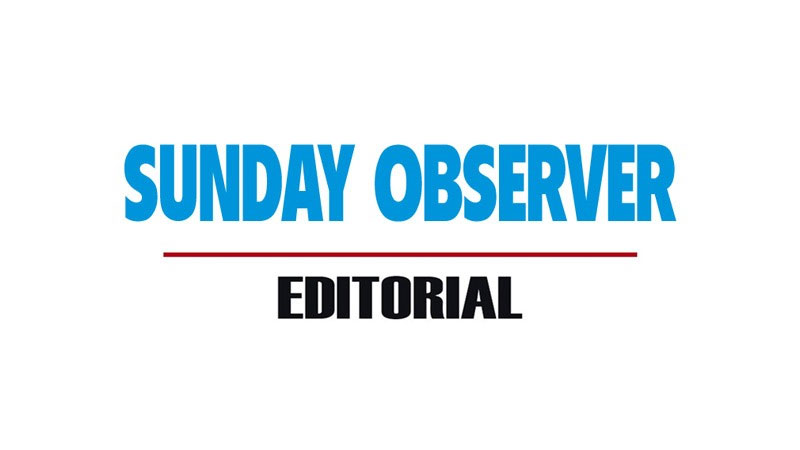With all the major candidates or Presidential hopefuls havingreleased their manifestos – which can be perused online – the Presidential Election (PE) campaign has entered a crucial phase. Now the voters have a few days to compare and contrast the different manifestos on offer.
The Presidential aspirants are keen to tap into two vote basesthat will hold the key to the Presidential Secretariat on September 22. One is the so-called “floating vote” – the segment of voters who are yet undecided on who they should vote for out of the 40 plus candidates. These voters are like to assess the track record and manifestos of the candidates before making an informed decision. Many of them are not likely to be swayed by the rhetoric that emanates from the political stage.
New or first-time voters comprise the other most important segment of the voting population. These are voters who have just turned 18 and earned the right to vote for the first time in a national election. Since the Local Government (LG) election was postponed, this is actually the first time they will be voting. While the LG election can be described as a lame duck affair, the PE is anything but. In the current context, it is the most high-stakes election we have had in several decades. Thus, the new voters will have a tough task in their hands to select the best possible candidate.
Most Sri Lankans are known to vote with their heart, not the head. They can easily be duped by rosy political promises and even a heady mixture of nationalism and patriotism. Both these factors are exploited by crafty politicians for their own survival. But this time, there are several segments of the voting public who are capable of making an informed decision based on cold, hard facts instead of unfeasible promises.
It is also clear that all the leading candidates fundamentally agree on several realities. One is that the agreement signed with the International Monetary Fund (IMF) by the present administration is basically here to stay. Thus, all the candidates and the parties they represent more or less agree that the IMF program should continue, albeit with certain adjustments that might have to be negotiated. This is a far cry from the days when the even the word “IMF” was anathema to Leftist parties such as the Janatha Vimukthi Peramuna (JVP), which is featured in this election through its new avatar the National People’s Power (NPP). All other leading candidates have anyway pledged to continue with the IMF program. Gone are the impractical pledges to do away with the IMF program altogether.
Another positive aspect is that all candidates are upholding the post-2022 economic recovery initiatives. They have realised that reneging on these critical steps could take Sri Lanka back to the (literally) dark days of 2022. Even the NPP has mellowed its stance on Foreign Direct Investment (FDI) and Joint Ventures (JVs). It has publicly said that foreign investors will be sought for the Trincomalee Oil Tank Farm and the Sri Lanka Telecom (SLT). This is a remarkable turnaround for a party that vehemently opposed President Ranil Wickremesinghe’s moves in this direction.
It is also praiseworthy that all the leading candidates have made maximum efforts to lead peaceful and violence-free campaigns. Although around 1,000 complaints over election law violations have been received by the Election Commission (EC) and the election monitoring organisations, they are mostly minor violations. However, there were reports of arson attacks on some party offices.
Violence during election cycles, whether orchestrated by candidates or perpetrated by their supporters, is a sign of political immaturity. In the past, many elections in Sri Lanka were marred by violence, including gruesome killings. These days are hopefully over as Sri Lankans have gained political maturity over the years. Election campaigns should be limited to the political stage. One can expect a fair amount of rhetoric and even mudslinging on these platforms, but it should end there without getting physical. This is even more important as the entire world is keeping tabs on this crucial election.
This Presidential Election should also be the last one with so many candidates in the fray. Having around 40 candidates, the majority of whom are no-hopers, is no joke as it increases overall costs. The ballot paper itself has to be several feet-long to accommodate their names in all three languages. No wonder that printing election documents alone takes up around Rs. 8 billion of the Rs.10 billion overall cost. Apart from massively increasing the deposit, other measures will have to be found to deter the entry of also-ran and proxy candidates. The latter are usually forwarded by leading candidates to get more free airtime for election propaganda. Once these proxy candidates go on air, they urge the voters to vote for candidate X or candidate Y, extolling their virtues.
Legal measures will have to be enacted to prevent this misuse of valuable airtime. After all, the SLRC and the SLBC can broadcast a commercial program during that period and earn some revenue.
We have also seen a slew of opinion polls during this election campaign, purporting to project a victory for one candidate or the other. Unlike those conducted in the US or other advanced countries, the publishers of these surveys do not reveal the sample size, the questions asked, the period in which the survey was conducted and the margin of error, among other variables. With no such transparency, it is hard to believe these surveys and polls. Of course, the real results and the people’s opinion can only be gauged at the ballot box on September 21.









